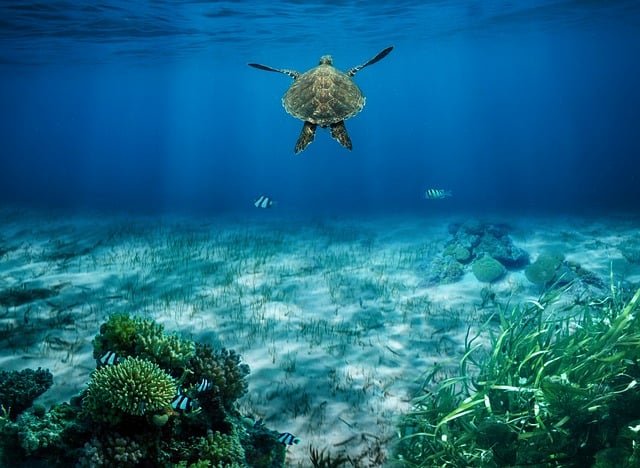Exploring the Hidden World of Cleaner Shrimp
Dive into the fascinating realm of cleaner shrimp, nature's underwater beauticians. These tiny crustaceans play a crucial role in maintaining the health of coral reefs and their inhabitants. From their symbiotic relationships with larger marine animals to their intricate cleaning rituals, cleaner shrimp offer a captivating glimpse into the complex ecosystems beneath the waves.

The Origins of Cleaner Shrimp
Cleaner shrimp belong to several different species within the family Hippolytidae. Their evolution as cleaners is believed to have occurred over millions of years, as they developed specialized adaptations to fill a unique ecological niche. These adaptations include their striking coloration, which serves as a visual signal to potential clients, and their small, nimble claws perfect for removing parasites and dead skin from their fishy customers.
The earliest fossil records of shrimp-like creatures date back to the Devonian period, approximately 400 million years ago. However, the specific lineage of cleaner shrimp is more recent, with their specialized cleaning behaviors likely evolving alongside the diversification of reef fish species. This co-evolution has resulted in a highly efficient and mutually beneficial relationship that has become a cornerstone of reef ecosystem health.
The Cleaning Station: A Hub of Activity
Cleaner shrimp typically establish themselves at specific locations on the reef, known as cleaning stations. These stations become well-known spots for fish to visit when they need a thorough grooming. The shrimp advertise their services through a distinctive dance, swaying back and forth with their white antennae waving, attracting the attention of passing fish.
At these stations, an intricate ritual unfolds. Fish approach and often change color or adopt specific postures to signal their willingness to be cleaned. The shrimp then carefully inspect their clients, meticulously removing parasites, dead skin, and other debris. This process can last anywhere from a few seconds to several minutes, depending on the size of the fish and the extent of cleaning required.
The Economics of Cleaning
The relationship between cleaner shrimp and their clients is a prime example of mutualism in nature. The shrimp receive a steady food supply in the form of parasites and dead tissue, while the fish benefit from improved health and hygiene. This arrangement is so beneficial that even predatory fish will refrain from eating the shrimp during cleaning sessions.
Recent studies have attempted to quantify the economic value of cleaner shrimp to reef ecosystems. While it’s challenging to put an exact price tag on their services, researchers estimate that the presence of cleaner shrimp can significantly reduce parasite loads in fish populations, potentially saving millions of dollars in the context of commercial fisheries and aquaculture.
Specialized Adaptations for a Cleaning Lifestyle
Cleaner shrimp have evolved a suite of adaptations that make them perfectly suited for their role. Their eyesight is particularly acute, allowing them to spot parasites and dead tissue on their clients. Their small size and agile bodies enable them to navigate the nooks and crannies of a fish’s scales and gills.
Perhaps most remarkably, cleaner shrimp have developed a form of anesthesia in their claws. When they pluck a parasite from a fish, they secrete a mild anesthetic that reduces any discomfort the fish might feel. This adaptation ensures that fish return to the cleaning station, maintaining the symbiotic relationship.
Threats and Conservation Efforts
Despite their important role in reef ecosystems, cleaner shrimp face numerous threats. Ocean acidification, caused by increasing carbon dioxide levels in the atmosphere, can affect the shrimps’ ability to form and maintain their exoskeletons. Overfishing of their client species can reduce the available food sources for cleaner shrimp populations.
Conservation efforts focused on protecting coral reefs indirectly benefit cleaner shrimp populations. Marine protected areas, which limit fishing and other human activities, provide safe havens where these symbiotic relationships can flourish. Additionally, sustainable fishing practices that maintain healthy fish populations ensure a steady stream of clients for cleaner shrimp.
The Future of Cleaner Shrimp Research
As our understanding of marine ecosystems deepens, cleaner shrimp continue to captivate researchers. Current studies are exploring the potential medical applications of the shrimps’ natural anesthetics. Other research focuses on the complex communication systems between cleaner shrimp and their clients, seeking to unravel the subtle cues that govern these interactions.
The study of cleaner shrimp also offers insights into the evolution of cooperative behaviors in nature. By observing these tiny creatures, scientists hope to gain a better understanding of how mutually beneficial relationships develop and persist over evolutionary time scales.
In conclusion, cleaner shrimp represent a fascinating example of nature’s ingenuity. Their role in maintaining the health of coral reef ecosystems highlights the interconnectedness of marine life and the importance of even the smallest creatures in the grand tapestry of biodiversity. As we continue to explore and understand the underwater world, cleaner shrimp stand as a testament to the complex and often surprising ways in which life has adapted to thrive in Earth’s oceans.





